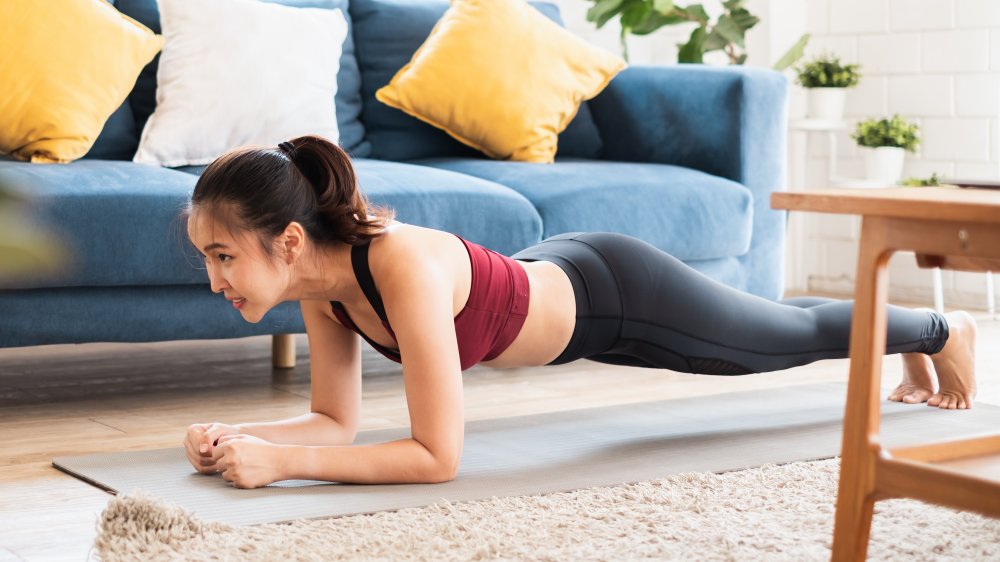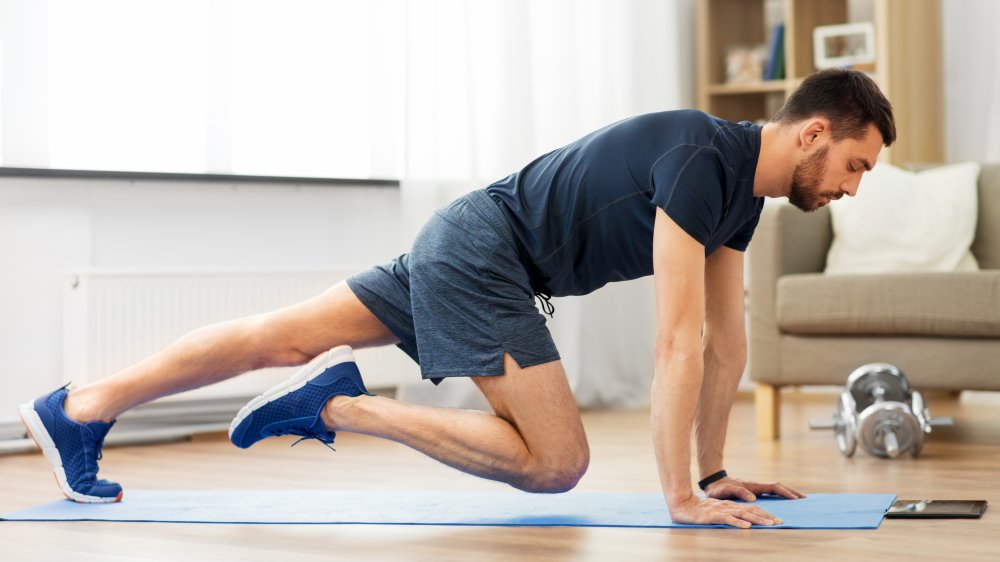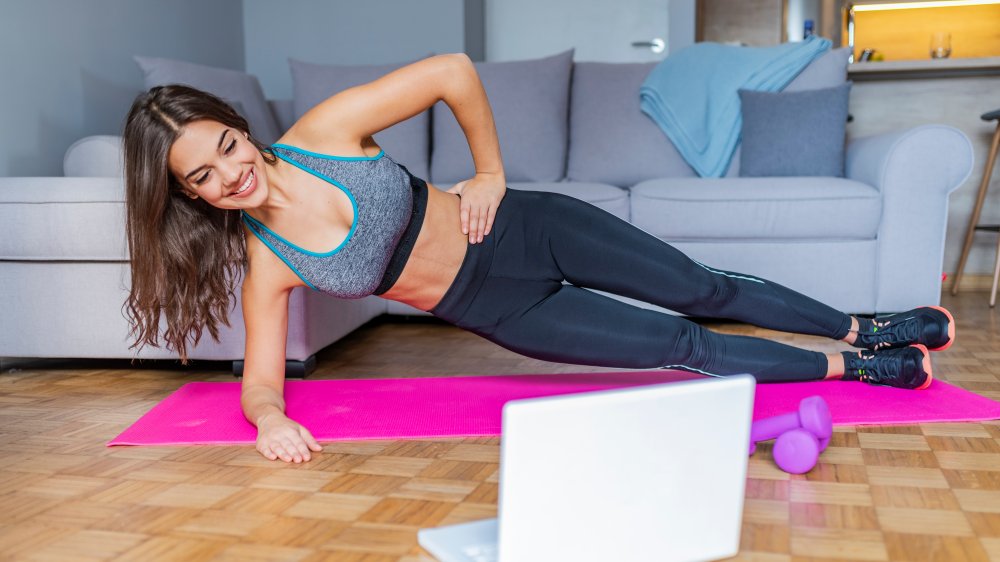Plank Variations You Should Know For The Ultimate Core Workout
Lets face it. We'd rather be doing most anything else than planking. Stretched out, resting on our elbows and forearms with our knees off the ground, shaking violently as we count down what feels like the longest seconds of our lives. The plank has (somehow) made it into many exercise routines. And as if we couldn't love (ahem, or hate) this move enough, there are variations to it. By mixing it up, we can enjoy (or endure) the ultimate core workout.
The first variation of the plank to be revealed is called the PPT plank, or posterior pelvic tilt plank. Fortunately, it's not as complex as it sounds. According to a study by Sports Biomechanics, the PPT plank greatly increases abdominal activation compared to a regular plank (via myfitnesspal). Once we're already in the plank we might as well get the maximum results out of it. Start in a traditional plank position, and roll your hips back like a dog tucking in it's tail. Squeeze your abs hard while you build tension and try to hold between 10 to 15 seconds.
Not all exercise requires speed
There is another variation is called the Walking Plank. Walking sideways while in a plank position will strengthen both upper and lower body muscle groups the same time you are training your core (per Healthline). To do, start in a full plank position with your hands placed right underneath your shoulders. Begin to shift laterally with your right hand and right leg moving at the same time. Follow with your left hand and left foot moving together to return back into the starting position. Trainer Clinton Steenkamp believes slow and steady wins the race saying, "this is not a speed exercise, so the more concentrated and slower the pace, the more your core and body will benefit."
Next up we have mountain climbers. Sadly, with no view at the end of the climb. Mountain climbers are a version of the plank that is exceptional for building cardio endurance and agility while working on the core (via verywellfit). To begin, get into a full plank position, make sure your weight is distributed evenly and pull your right knee into your chest as far as possible. Bring your right knee back to your original plank position and repeat with the left knee.
Switch it up to work your obliques
If you're looking for a smidge of sweet relief while planking, try turning over into a side plank instead of collapsing to the floor. This new variation focuses more on the sides of your core, also known as your obliques (via myfitnesspal). To try it out, start by lying on your side and planting your elbow right under your shoulder with your forearm on the ground. Stack one leg on top of the other and lift your body from the ground. Form and straight line from your shoulders to your ankles and hold as long as you can.
If you're having trouble finding the love for the plank, while in the plank, remember that this move is an insanely beneficial way to obtaining those Britney Spears circa 2005 dream abs! In fact, many experts now recommend the plank over crunches and sit-ups because the move puts less strain on your spine and hip flexors (via Healthline).


